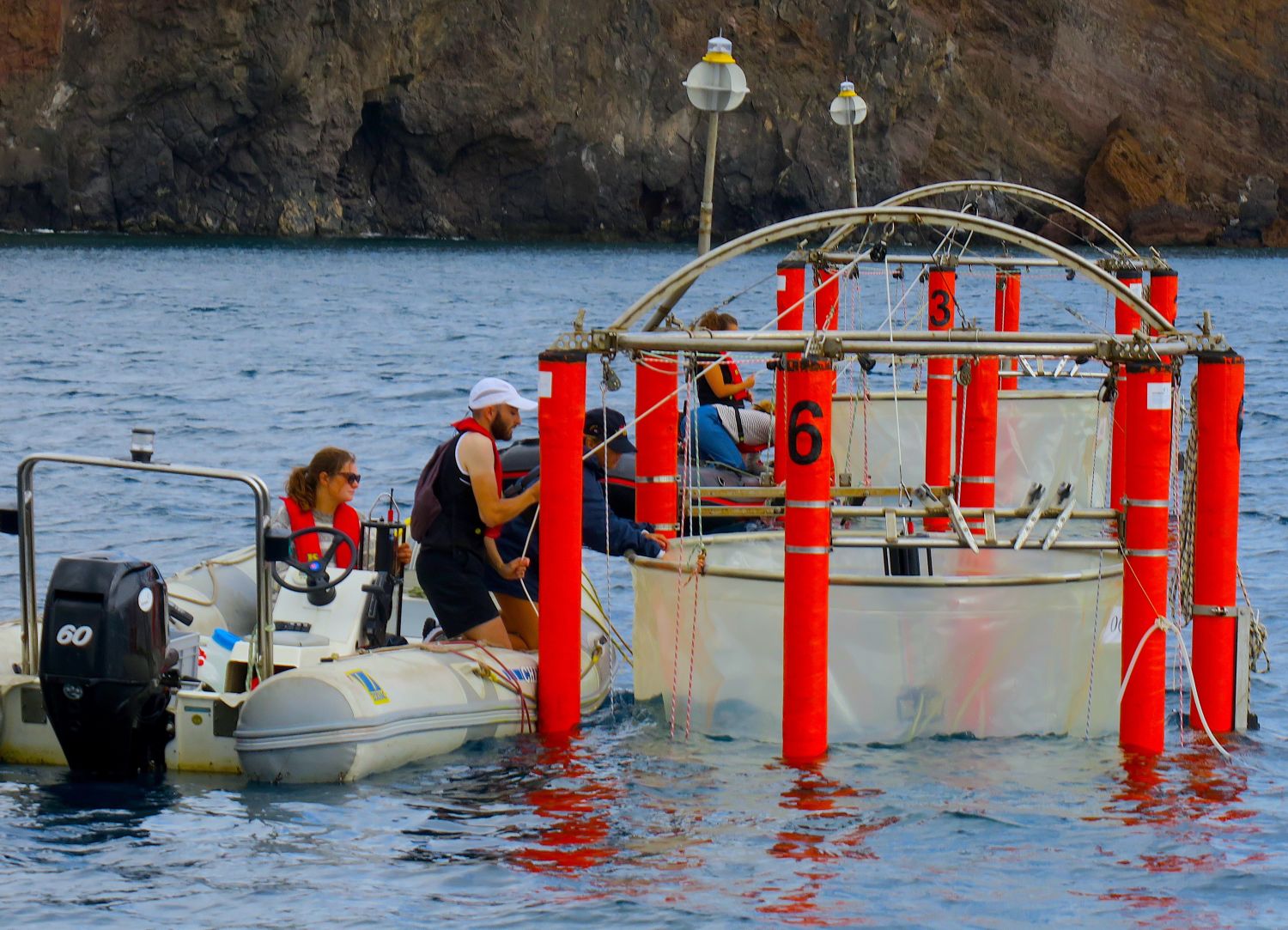10 tons of sampling water collected

In total we sampled nearly 10,000 litres of water from the mesocosms over the course of this experiment – collected with our depth-integrating water (IWS) in portions of 5 litres each haul. This comes out to 2000 IWS hauls, not counting the mis-hauls. Those 10,000 litres were filled in bottles of different kinds and sizes – depending on the measurement parameter the sample is intended for – transported to the various laboratories at PLOCAN, the Science and Technology Park and the University of Las Palmas in Tafira, processed and measured on site or stored for later analysis in the home laboratories. Together with the data from various electrical, optical and fluorometric sensors and the net tows for collection of plankton organisms, over 60 parameters were covered each sampling day. The huge effort in collecting and processing all these samples will be rewarded with an unprecedented data set that will provide us with a deep insight into the responses of a nutrient-poor pelagic ecosystem to artificial upwelling of nutrient-rich deep water.
The sampling routine every two days involved about 10 to 12 persons distributed over five boats, the four GEOMAR boats Wassermann, Rita, Littchen and C5, and the PLOCAN boat PLOCAN Uno. Depending on wind and wave conditions it could be fun and entertaining or challenging and exhausting. Seasickness not excluded. Over time some teams got into a sportive competition on who can do it faster and more efficient. By the time the boats returned to Taliarte harbour with their rich booty, those not on the sampling schedule for that day were already waiting at the harbour, eager to receive the samples and start processing them.
video: https://vimeo.com/307021550
Time lapse video of routine sampling on Wassermann (video source: Kristian Spilling; edited by: Malte Heinemann)



